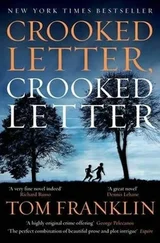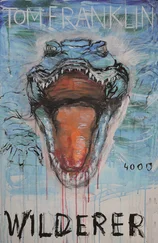Larry Ott
Larry is an outcast and a loner who comes from a local family.
Silas Jones
Silas investigates the crimes in the novel and has to acknowledge his guilt for having ruined Larry’s life.
Carl Ott
Larry’s father had an affair with Alice Jones, and Silas is his son.
Ina Ott
Larry’s mother is the last of the earlier generation still alive.
Alice Jones
Silas mother, a beautiful, strong-willed and hard woman.
Wallace Strongfellow
Wallace kills Tina Rutherford and shoots Larry.
Cindy Walker
Silas’ girlfriend at the time she disappears.
There are many other characters in the novel.
Themes
The themes in this novel are deeply interconnected: Memory, the past and secrets – Guilt , responsibility and betrayal – Power –
Belonging – Horror and monster s – Redemption.
Style and language
The dialogue in the novel reflects the strong local accent of rural Mississippi, providing a real sense of place and identity. The prose is rich with poetic similes and symbolic passages.
Interpretations
The novel is primarily a crime thriller, and this chapter will look at where the novel fits in with the literary genre and traditions of crime fiction.
| 2. |
Tom Franklin: Life & Works |

Thomas Gerald Franklin (* 1963)
© Ulf ANDERSEN/GAMMA-RAPHO/laif
| YEAR |
PLACE |
EVENT |
AGE |
| 1963 |
Dickinson, Alabama |
Born on 7th of July in the tiny community (400–500 citizens), Franklin grew up as a huge fan of comic books and pulp fiction (science fiction, horror, fantasy, Tarzan stories, etc.) and was not a good student at school. |
Up to age 18 |
| 1981 |
Mobile, Alabama |
The family moved, and Franklin attended the University of South Alabama, where he worked many menial jobs and took nine years to graduate. |
18 |
| 1994 |
Selma, Alabama |
Taught for a year at the famous all-black Selma University. |
31 |
| 1998 |
Fayetteville, Arkansas |
He graduated from the University of Arkansas with an M.F.A. after four years which he really enjoyed, during which he also met his future wife Beth Ann. |
35 |
| 1999 |
|
First work published, the story collection Poachers |
36 |
| 2003 |
|
First novel published, Hell at the Breech |
40 |
| 2006 |
|
Smonk is published, cementing his reputation as a regional writer |
43 |
| 2010 |
|
Crooked Letter, Crooked Letter is published to widespread acclaim and great commercial success |
47 |
| 2013 |
|
The Titled World is published, a novel Franklin co-wrote with his wife |
50 |
| 2017 |
|
Tom Franklin is currently an associate professor at the University of Mississippi. |
54 |
| 2.2 |
Contemporary Background |
SUMMARY
Whether he is writing crime fiction or historical novels, Tom Franklin is a regional writer who is closely associated with the American South, specifically the states Alabama and Mississippi. The traditions, lifestyles and landscapes of the South feature prominently in his writing.
The South
The southern states of the USA are very different from the North. Traditional ways of life which were associated for generations with natural factors like different kind of agriculture (the plantations, for example) and the very different climate are combined with historical, political and social factors including slavery, segregation, the American Civil War, widespread religious intensity and a lot of rural poverty. Industrialisation and urbanisation had been northern phenomena long before they began affecting the South.
Franklin addresses many issues of Southern identity and life in Crooked Letter , including racial dynamics, the coherence and claustrophobia of small rural communities, and social problemslike drugs, alcoholism and poverty. He also makes efforts to portray the languid atmosphereof the hot and humid climate, and there is a strong awareness of beauty in his descriptions of the landscapes of the South.
Chicago
Chicago has many nicknames, including the “Windy City” – referring to its chilly and raw climate – and the “City of the Big Shoulders”, which is a line taken from Carl Sandburg’s poem Chicago (1916) and reflects the city’s strong working-class and industrial identity. In Crooked Letter , Alice and Silas move from Chicago to Mississippi, which is for Silas like a different world. When Silas talks to Cindy about Chicago he describes an exciting place with raw weather, access to the highest level of national sports, great pizza and much more – a lively, stimulating environment, full of noise and pressure, very different from the slow and quiet rural world of Chabot and Fulsom (p. 243).
Race
Race is a huge issue in American history and culture, and while it is a factor throughout the entire country and throughout all social strata and demographics, it is historically particularly relevant to the Southern states, including Mississippi, where the novel is set.
Slavery and institutionalised white supremacy(the conviction that white people are fundamentally better than dark-skinned people) were defining features of Southern society for many years. The American Civil War has complex origins, but one of the major factors was the push to abolish slavery.
The Civil Rights Movement of the 1960s had many of its defining moments occur in the South, where racial segregation was widespread and efforts to maintain the white supremacist status quo were fiercer and more oppressive than in the North. In a secretive shadowy world, the institutional racismwhich enforced segregated schools, bathrooms, buses and drinking fountains was accompanied by mob violence and the secret society Ku Klux Klan. The KKK was first formed in the 1860s to overthrow the Republic following the Civil War. The white supremacist identity of the Klan has remained its defining feature throughout the years. The KKK is a secret society, but members are famous for their distinctive uniform of white robes with pointed white hoods. The Klan has been responsible for countless murders, lynchings and assaults on African-Americans and civil rights activists.

Grave of 14-yearold Emmett Till, lynched by a white man.
© picture alliance/AP Photo
Silas had virtually no contact with white people when he was growing up in a peaceful all-black neighbourhood in Chicago (131.8–21). It was only when he came to Mississippi that he encountered white people who would openly call blacks the N-word. As an adult, Silas sees the effects of structural racism, for example when he looks at the courthouse and sees exclusively white lawyers and exclusively black defendants (174.4–6).
Читать дальше














